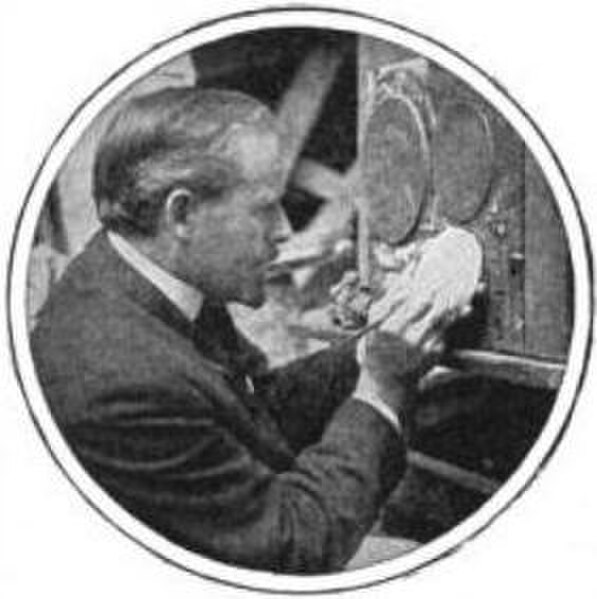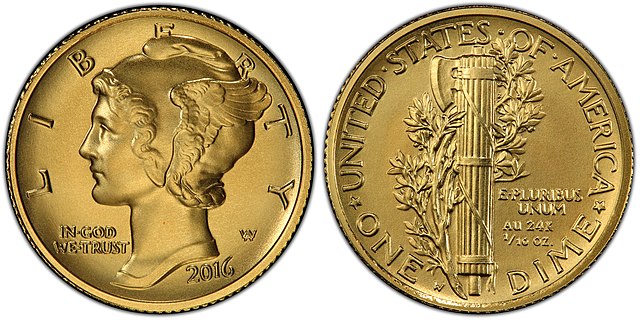The Mercury dime is a ten-cent coin struck by the United States Mint from late 1916 to 1945. Designed by Adolph Weinman and also referred to as the Winged Liberty Head dime, it gained its common name because the obverse depiction of a young Liberty, identifiable by her winged Phrygian cap, was confused with the Roman god Mercury. Weinman is believed to have used Elsie Stevens, the wife of lawyer and poet Wallace Stevens, as a model. The coin's reverse depicts a fasces, symbolizing unity and strength, and an olive branch, signifying peace.
Adolph Weinman is widely believed to have used his neighbor, Elsie Stevens, as the model for the Mercury dime.
Weinman's 1909 statue of Victory in Baltimore's Union Soldiers and Sailors' Monument has features said to bear a resemblance to those on the Mercury dime.
A pattern of the 1916 Mercury dime as illustrated in that year's Mint Director's Report. Note that the head is further to the right of the coin than on the issued piece and the head covers less of the "E". Weinman's monogram is also absent.
2016-W Gold Mercury dime
Adolph Alexander Weinman was a German-born American sculptor and architectural sculptor.
Adolph Weinman, c. 1917
Weinman's sculpture on the pediment of the Jefferson Memorial, featuring the Committee of Five
General Alexander Macomb (1906–1908), Detroit, Michigan
Union Soldiers and Sailors Monument (1909), Wyman Park Baltimore, Maryland







